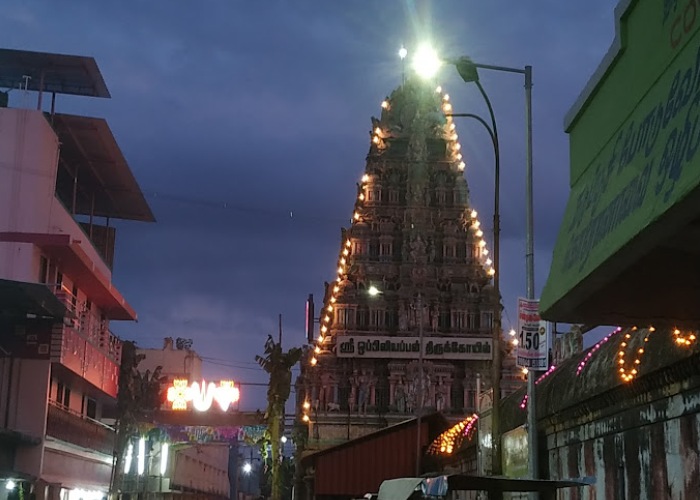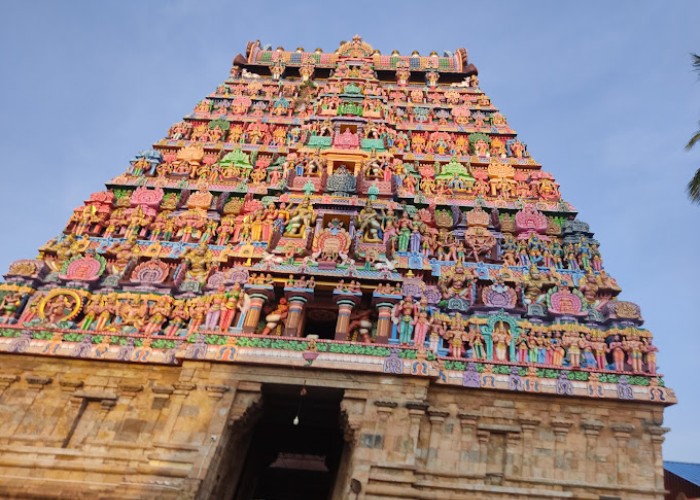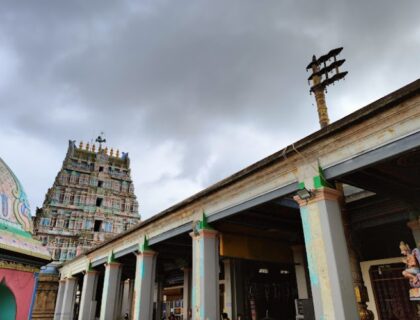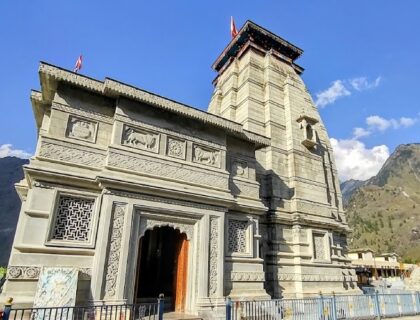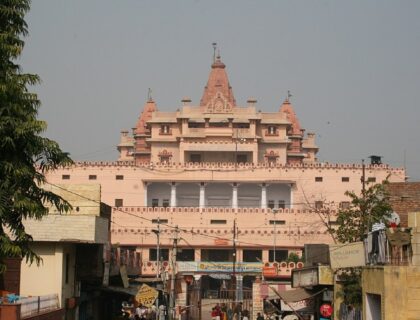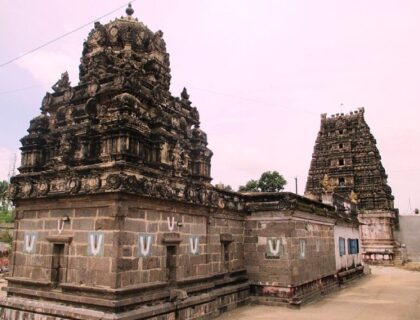Oppiliappan Temple
Oppiliappan Temple is a Hindu temple dedicated to lord Vishnu near Thirunageswaram, also known as Thiruvinnagar, a village on the outskirts of Kumbakonam in the South Indian state of Tamil Nadu. The temple, built in the Dravidian style, is mentioned in the Naalayira Divya Prabandham, an early mediaeval Tamil canon of the Alvar saints from the 6th to the 9th centuries CE. It is the sixty-first of the 108 Divya Desams devoted to Vishnu. Oppiliappan represents Vishnu, while Bhudevi represents his consort, Lakshmi.
The Oppiliappan Temple is thought to be of substantial antiquity and to have been initiated by the Mediaeval Cholas of the late 8th century CE, with additional contributions from Thanjavur Nayaks at various times. The complex houses all of the shrines and pools of water linked with it. Oppiliappan is said to have appeared for the sage (teacher) Markandeya as well as the Hindu gods Bhudevi, Brahma, and Shiva.
Story/Legend of the Oppiliappan Temple
The Brahmanda Purana, one of the eighteen famous Hindu books, chronicles the temple’s history. Tulasi, according to Hindu folklore, once performed penance in order to gain closeness to Vishnu. Vishnu said that his consort Lakshmi would arrive at Tiruvinnagaram under Tulasi’s lap. Tulasi appeared at the location of the temple. This is described in the 53rd verse of Thiruviruththam’s Nammazhwaar. Markandeya Maharishi revered Vishnu and wished for Lakshmi to become his daughter and Vishnu to become his son-in-law. Markandeya was on a religious trip once, and after arriving in Thiruvinnagaram, he believed it was the right place to fulfil his wish.
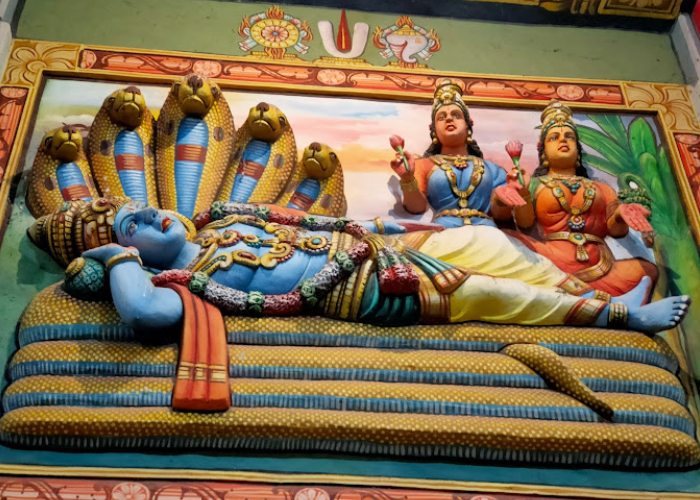
Markandeya began a thousand-year penance in order to obtain Lakshmi’s blessings. Lakshmi manifested as a child beneath the already incarnated Tulasi plant. Markandeya sensed Lakshmi’s presence in the form of the baby and recognised that part of his wish had been granted. He took custody of the child and raised her. When the young girl reached adolescence, Vishnu appeared as an old man in the panguni month of Shravana and requested for Markandeya’s daughter in marriage.
“You are very ripe and old, my daughter is too young and she does not even know how to cook with proper salt contents,” Markandeya replied, to which the old man replied, “If your daughter must cook without salt, I will still take it as my best food, but I will not leave from here without marrying her.” Markandeya sought Vishnu’s assistance before realising, through penance, that the old man was Vishnu himself. When he opened his eyes, he saw Vishnu in front of him, holding a conch and a chakram, as in Vaikundam.
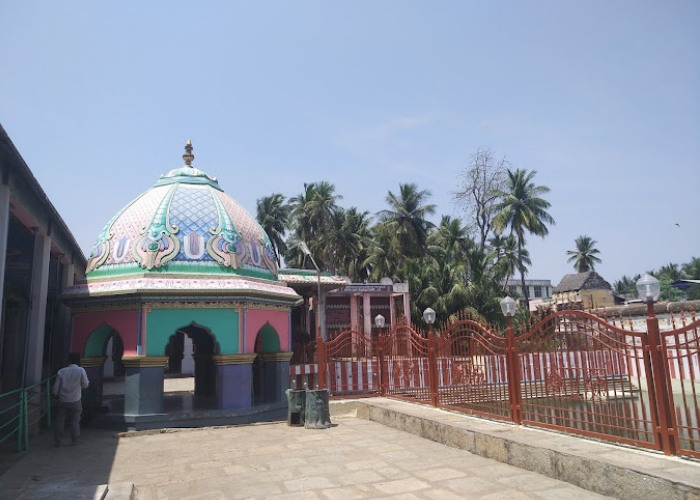
Markandeya proposed marriage to his daughter. The temple’s Neyvethiyam (food offering) is always cooked without salt, according to folklore. Thus The name Oppiliappan is a result of this legend. This temple is considered one of the 108 Divya Desams.
What is Divya Desams– A Divya Desam or Vaishnava Divya Desam is one of the 108 Vishnu and Lakshmi temples recorded by the Alvars, the poet-saints of the Sri Vaishnava faith. 105 of the 108 temples are in India, one is in Nepal, and the final two are thought to be in space, in Tirupparkatal and Vaikuntham. They are distributed over the Indian states of Tamil Nadu (84), Kerala (11), Andhra Pradesh (2), Gujarat (1), Uttar Pradesh (4), and Uttarakhand (3). Muktinath, Saligramam is Nepal’s sole Divya Desam. The 12 Alvars respect the Divya Desams in the Naalayira Divya Prabandham, a collection of 4,000 Tamil hymns.
History of Oppiliappan Temple
The inscriptions and records do not indicate when the temple was established, however, there are inscriptions from the Mediaeval Cholas period suggesting rich donations to the temple. Two inscriptions have been discovered in Tirunageswaram’s Naganathar Temple. The 1911 epigraph 211 on the northern wall of the central shrine reveals that the Chola king, Parakesarivarman, alias Rajendra Chola I (1012-44 CE), gave the temple a gold jewel set with diamonds and pearls. The second inscription on the shrine’s southern wall, marked 218 of 1911, marks a gift of land to the temple in the 14th year of Chola king Rajaraja Rajakkesarivarman I.

The original image of the presiding god is constructed of wood and then replaced with stone in many old temples in Tamil Nadu, including this one. Govinda Dikshitar, the minister of consecutive Nayak monarchs Achuthappa Nayak (1560-1614) and Raghunatha Nayak (1600-34), made numerous improvements to the shrine. The Hindu Religious and Endowment Board of the Government of Tamil Nadu maintains and administers the temple.
The architecture of Oppiliappan Temple
The Oppiliappan Temple is surrounded by a granite wall and includes a five-tiered rajagopuram (the entryway tower). The complex houses all of the shrines and pools of water linked with it. For performing Thirumanjanam (ablution) to the presiding god, the Sahasradhari plate and pot (kudam) are made of gold. The temple also keeps a golden sword, diamond crown, and gold arm guard for Hanuman’s figure. The shrine over the sanctum is gold-plated.

The Oppiliappan Temple’s main shrine houses the image of Oppiliappan in standing posture, as well as images of Bhoomidevi and the guru Markendeya. Suddhananda means “pure happiness” and is the name of the vimana. The Desika shrine can be seen near the sanctum sanctorum. The shrine of Anjaneya is placed on the southern side of the first precinct, Alvars’ and Rama’s on the northern, and Ramanuja’s on the eastern.
Maniappan’s shrine is in the second precinct on the southern side, while Ennappan’s shrine and Bhoomidevi’s holy birthplace are on the northern side. Garuda’s shrine is directly across from the sanctuary and behind the temple mast. The dancing Krishna shrine is placed on the southern side of the main entryway.
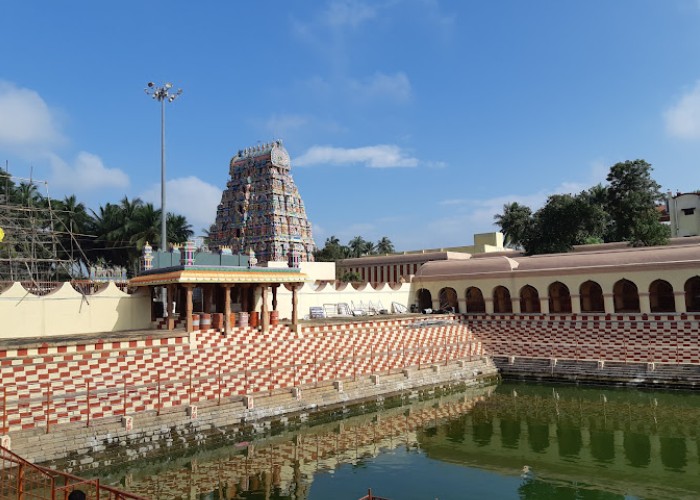
During festivals, a marble hall on the western side of the inner precinct serves as a resting place for the festival deities. The Dolotsavam celebration is held in another marble hall on the temple’s northern side. A shrine adjacent to the hall has images of Rama, Lakshmana, Sita, and Hanuman. Next to it is the sacred sleeping chamber known as Tiruppalliarai, which is covered in mirrors. The temple has a Yaga sala for performing religious rites. The temple contains a hall for storing festival vehicles, a library, and a hall with intricately carved pillars on the banks of the temple tank, where the annual float festival is held.

The Kodimandapa, located to the south of the Garuda shrine, is used for a variety of religious practices on a daily basis. The annual Kalyana Utsavam festival is held in the hall, along with music and dance performances. Because the temple is regarded as the southern equivalent of Thirupathi, devotees execute marriages and vows in the same manner as in Thirupathi. Outside the main structure, the temple has two marriage halls, a rest house with five rooms, two more halls, and accommodation for the little and big chariots.
A garden surrounds the temple’s third precinct, and a much larger garden about 0.5 km (0.31 mi) to the south of the temple, where Tulasi and flowers are produced. During the annual Vasantotsavam celebration, which lasts six days in May-June, a hall in the yard is utilised to rest deities.
Facts about Oppiliappan Temple
- Also hailed as Thiruvinnagar, this ancient temple is located at Thirunageswaram village, on the outskirts of Kumbakonam town.
- Oppiliappan Temple is classified as a Divya Desam, the 108 Vishnu temples revered in the Vaishnava canon.
- Oppiliappan Temple is considered the elder brother of the presiding deity of Tirupathi Venkateshwara Temple. The temple is revered in Naalayira Divya Prabandham, the 7th–9th century Vaishnava canon, by Periyalvar, Thirumangai Alvar and Nammalvar.
- The main deity is worshipped here as Lord Uppiliappan, and his consort is Goddess Bhoomi Devi.
- Oppiliappan is believed to have appeared for sage Markandeya and the Hindu deities Bhudevi, Brahma, and Shiva.
- The main attraction of Oppiliappan Temple is the five-tiered dome that adorns the temple entrance.
- The global parents are Lord Oppiliappan and Goddess Mahalakshmi, who are said to bestow their blessings on devotees and bestow them with good health, prosperity, happiness, and tranquillity.
- It is also said that the divine couple can help inculcate tolerance in life partners and bring about marital harmony.
- Oppiliappan Temple is also considered the southern version of the famous Tirupathi temple, and many devotees consummate their vows and marry here, just as they do at the hill temple.
- The main temple is the main deity of Oppiliappan; the Oppiliappan Temple complex also houses small idols of Bhumi Devi, Markandeya Maharshi, Anjaneya, Alwar, Srirama, Manippan, Ennappan and Garuda.
Famous Festivals In Oppiliappan Temple
- Ramanavami is the festival associated with Rama, a Vishnu avatar. The event lasts ten days and includes music and dance performances, as well as kanakabhishekam (golden ablution for the festival image) and Rama Pattabhishekam on the final day.
- Brahmmotsavam is the major festival celebrated in the temple.
- The chariot festival is the most prominent festival of the temple, celebrated during the Tamil month of Chittirai.
- Diwali – Diwali is one of the most admired and auspicious festivals in the town.
- Chitra Poornima is also a significant occasion for celebration in the temple.
- Vaikuntha Ekadashi – Vaikuntha Ekadashi celebrated during the Tamil month of Margazhi (December–January) is the major festival celebrated in the temple.
How to Reach Oppiliappan Temple
Arulmigu Oppiliappan Temple is a Hindu temple in the village of Thirunageswaram near Kozhikode; it is also known as the Thiruvinnagar of the Venkatachalapathy Temple.
By Air: Tiruchirappalli International Airport in Trichy is the nearest airport, located 110 km from the temple.
By Railway: The nearest railway station is at Thirunageswaram at 1.9 km, and the second is at Kumbakonam railway station, which is 5.0 km from the temple.
By Roadways: Taxis, autos, and buses are available from Kumbakonam, which is only 6 kilometres away. The scandal is accessible by bus or train from several parts of the city.
Also Read – Thirunarayur Nambi Temple
Support Us
If our content helps you even 1% in gaining information about the temple, please support us by contributing any amount, our UPI ID is - q417999792@ybl Or pay using QR CODE >>> Click Now



